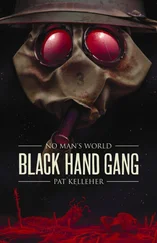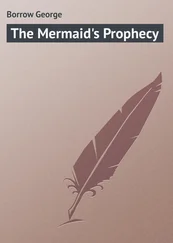Pat Kelleher
THE IRONCLAD PROPHECY
“When sorrows come, they come not single spies
But in battalions.”
—
Hamlet , Act 4, Scene 5, William Shakespeare
13 thBATTALION PENNINE FUSILIERS: COMPANY PERSONNEL
Battalion HQ.
C.O.:2 ndLieutenant J. C. Everson
2C.O.:Company Sergeant Major Ernest Nelson
Company Quartermaster Sergeant Archibald Slacke
Pte. Henry ‘Half Pint’ Nicholls (batman)
Royal Army Chaplain: Father Arthur Rand
(CF4) (‘Captain’) War Office Kinematographer Oliver Hepton
‘C’ Company
No 1 Platoon
C.O.:Lieutenant Morgan
No. 2 Platoon
C.O.:2 ndLieutenant Palmer
2C.O.:Platoon Sergeant Herbert Gerald Hobson
1 Section
I.C.:Lance Corporal Thomas ‘Only’ Atkins
Pte. Harold ‘Gutsy’ Blood
Pte. Peter ‘Nobby’ Clark
Pte. Wilfred Joseph ‘Mercy’ Evans
Pte. Bernard ‘Prof’ Gates
Pte. George ‘Porgy’ Hopkiss
Pte. Leonard ‘Pot-Shot’ Jellicoe
Pte. David Samuel ‘Gazette’ Otterthwaite
Pte. Eric ‘Chalky’ White
RAMC
Regimental Aid Post
RMO:Captain Grenville Lippett
Red Cross Nurses
Sister Betty Fenton
Sister Edith Bell
Driver Nellie Abbott (First Aid Nursing Yeomanry)
Orderlies
Pte. Edgar Stanton
Pte. Edward Thompkins
Machine Gun Corps (Heavy Section) ‘I’ Company: I-5 HMLS Ivanhoe
C.O.:2 ndLieutenant Arthur Alexander Mathers
Pte. Wally Clegg (Driver)
Pte. Frank Nichols (Gearsman)
Pte. Alfred Perkins (Gearsman)
Pte. Norman Bainbridge (Gunner)
Pte. Jack Tanner (Gunner)
Pte. Reginald Lloyd (Loader / Machine Gunner)
Pte. Cecil Nesbit (Loader / Machine Gunner)
D Flight 70 Squadron: Sopwith 1½ Strutter
Lieutenant James Robert Tulliver (Pilot)
Corporal Jack Maddocks (Observer)

PREFACE
“It’s a Long, Long Way to Tipperary…”
THE MYSTERY OF the Harcourt Crater galvanised a generation when, in 1916, nine hundred men of the 13 thBattalion of the Pennine Fusiliers vanished from the Somme. Ten years afterwards, a find in a French field revealed silent film footage, letters and journals, describing the Fusiliers’ existence on another planet, only for it to be declared a hoax and forgotten as time passed.
Almost a hundred years later, the publication of No Man’s World: Black Hand Gang revived interest in the case of the missing Pennine Fusiliers. Since then, members of the public have contacted the publisher with claims of new evidence, of unseen documents and letters that have lain in ordinary boxes and in dusty attics for decades, unregarded.
This volume, continuing the account of the Pennine Fusiliers’ fate, has been able to include this new information, where appropriate, with the permission of the families, in order to shed light on one of the biggest military cover-ups of the last century.
It must be remembered, however, that it was not just the 13 thBattalion of the Pennine Fusiliers that vanished that day. The HMLS Ivanhoe , one of Britain’s secret weapons, the new-fangled ‘tanks,’ also disappeared, along with its eight-man crew.
While the mystery of the Pennines inspired lurid pulp tales in magazines such as Great War Science Stories , and featured in adventures like The Curse of the 13 thBattalion ; The Golem of No Man’s Land ; Zeppelin from Another World and Crater of the Somme-bies , the Ivanhoe appeared in only a small number of tales published during 1928. They were written by Harold G. Cargill who, the publication’s editors sensationally suggested, was an eyewitness survivor of the Fusiliers, returned from the planet.
While there was no evidence to suggest that Cargill was ever a member of the Pennine Fusiliers, his name not appearing in any official war records, nor indeed in a list of the missing, it is clear from his personal correspondence that he knew more than he was telling, or perhaps was allowed to tell.
The Ivanhoe and its crew were portrayed in those tales as cheery, jingoistic modern day knights-in-armour, riding out across a strange planet on colourful, rip-roaring quests.
The truth, however, is more inauspicious.
Military records show that the Ivanhoe , with five other tanks from I Company, Machine Gun Corp, Heavy Section, was ordered into battle on 1 stNovember 1916 to support an assault on Harcourt Wood by the Pennines. Of those tanks, three broke down before they reached the front line. I4, the female tank Igraine, was mired in mud and abandoned. Wreckage of I3, the Invicta ,was found at the bottom of the Harcourt Crater itself. It is assumed that it drove blindly over the edge, moments after the crater’s appearance, killing all on board.
All of the major events in this account are drawn, where possible, from primary sources, including fragments of the Ivanhoe’s tank diary. Scribbled in faded pencil and almost indecipherable in places, they were found among the papers of Arthur Cooke, author of The Harcourt Crater: Hoax or Horror? While incomplete, the fragments do give some clues to the apparent fate of the Ivanhoe and its crew, a fate that is firmly entrenched in that of the Pennine Fusiliers.
And it is uplifting to discover from these sources that while the Pennines were fighting for their existence in a place that was, most definitely, a long, long way from Tipperary, throughout the travails and terrors they had to endure their hearts did, indeed, remain right here.
Pat Kelleher
Broughtonshaw December, 2010

PROLOGUE
“Here Comes The British Navy,
Sailing On The Land…”
Elveden, Suffolk, May 1916
THE GREAT ARMOURED beast stood passively, like a great destrier waiting to be ridden into battle.
Lieutenant Arthur Mathers tried to hold his nerve in front of his men but, despite his efforts, the muscle beneath his right eye began to twitch uncontrollably. His palms began to sweat and he started to hyperventilate. He could feel his heart pounding in his chest.
To his men beside him, this thing was a magnificent brute. They crowded around it admiringly, patting its flanks and inspecting it like a prize thoroughbred.
“Bleedin’ hell, it’s a sight, isn’t it, sir?” Wally Clegg, the small, thin-haired cockney beside Mathers, beamed with a joy the officer couldn’t feel.
“Yes, Clegg. Yes it is,” said Mathers, trying to temper his rising fear.
Reginald Lloyd looked over at the small man with the weary air of one given to correcting those less educated than himself. “It’s not an it , Wally. Tanks are a he or a she .” Reggie had been a butler to minor aristocracy, but had joined up to ‘do his bit,’ a duty he seemed to interpret as trying to instil some manners into his crewmates.
Читать дальше













